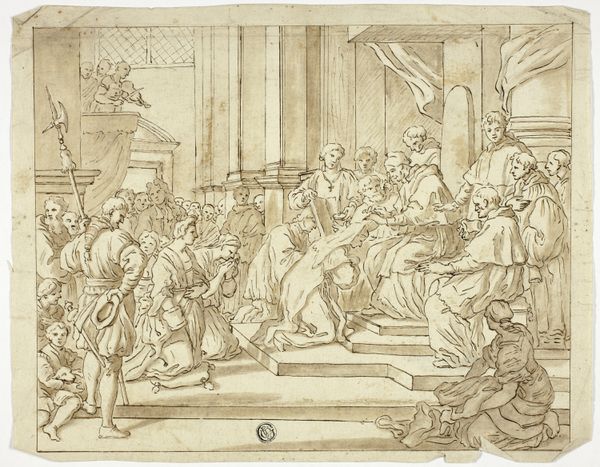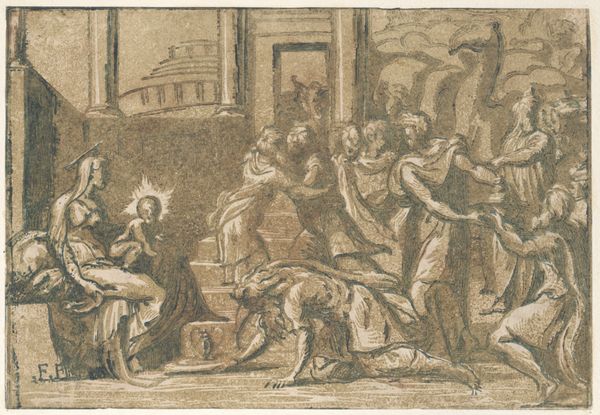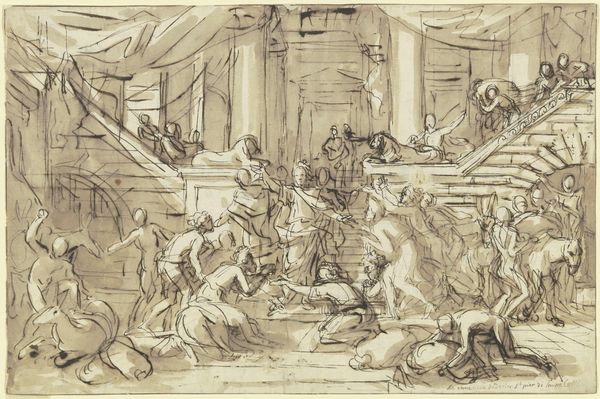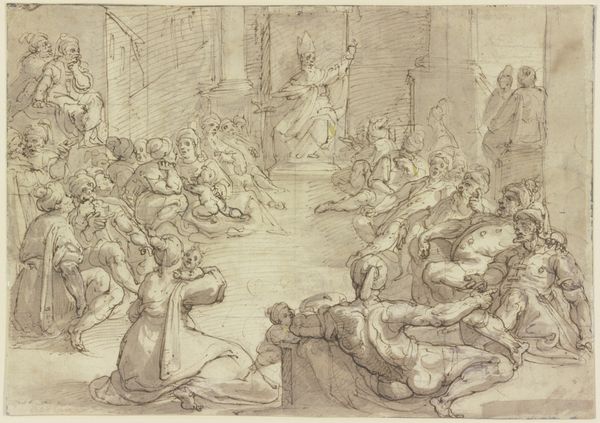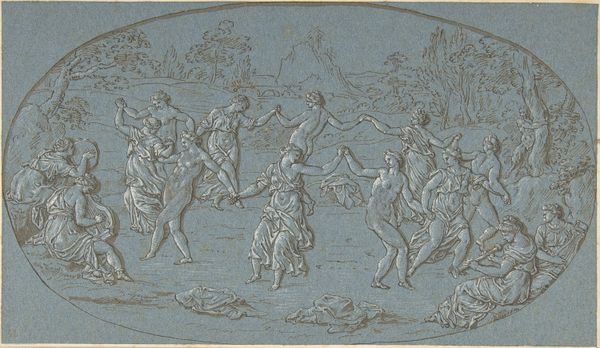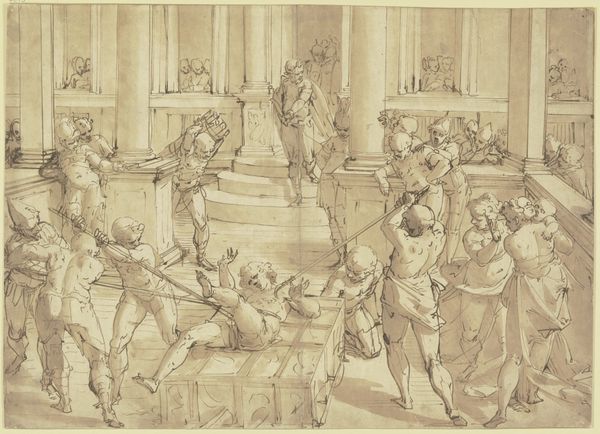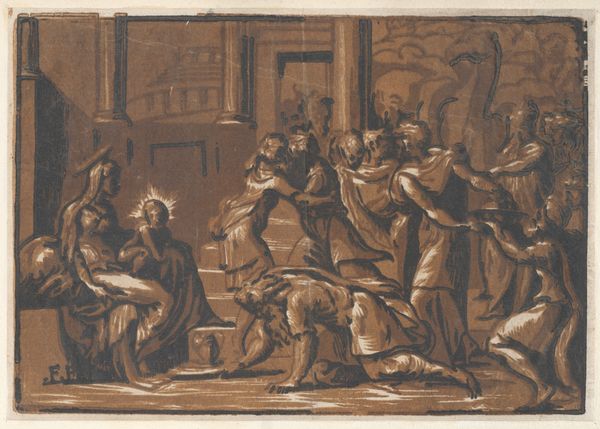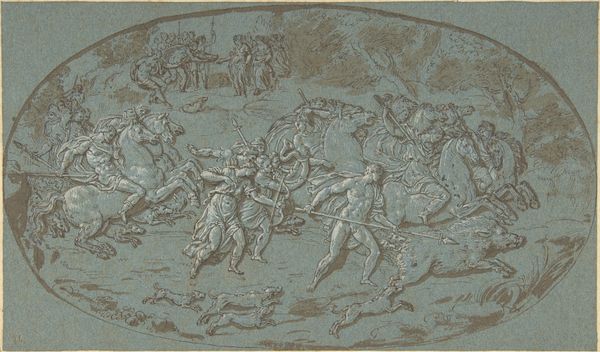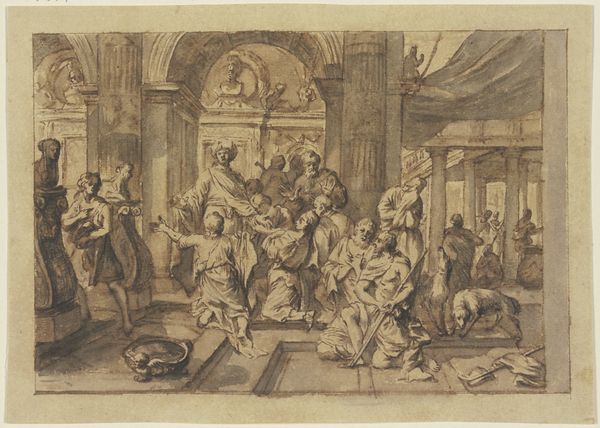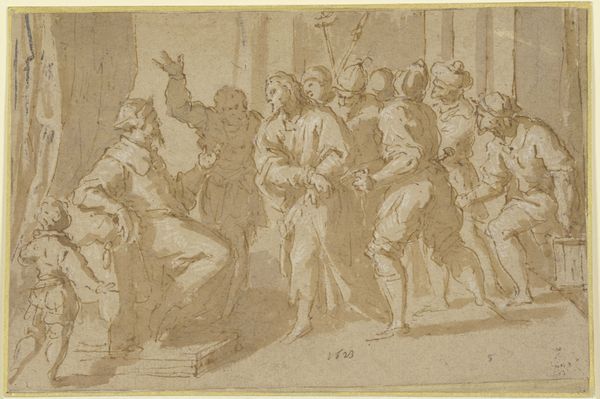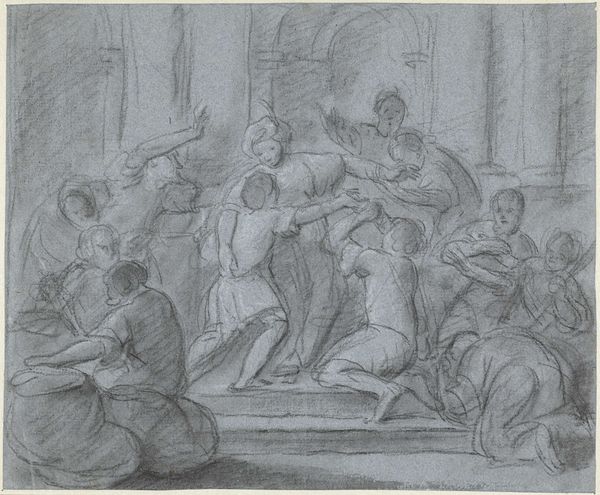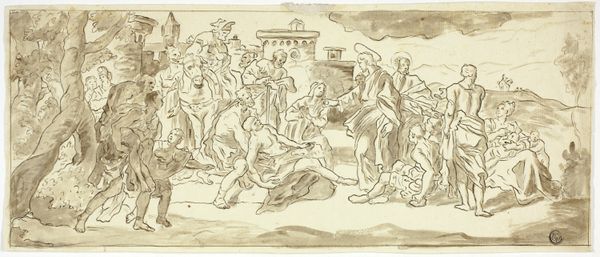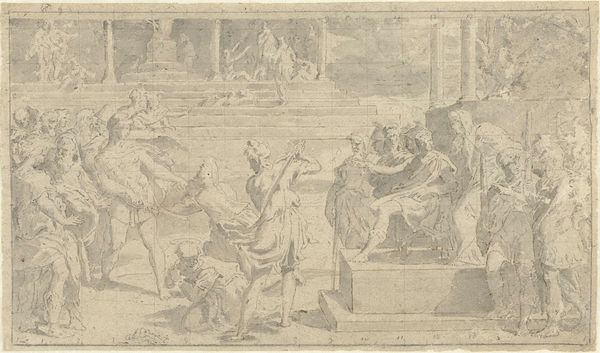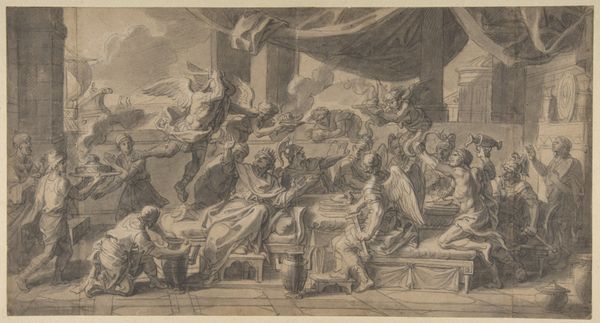
Fight Between Perseus And Phineus in the Palace of Cephus 1693 - 1733
0:00
0:00
drawing, print, etching, ink, engraving
#
drawing
#
narrative-art
#
baroque
# print
#
etching
#
greek-and-roman-art
#
etching
#
figuration
#
ink
#
pen-ink sketch
#
history-painting
#
engraving
Dimensions: sheet: 6 1/4 x 10 13/16 in. (15.9 x 27.5 cm)
Copyright: Public Domain
Bernard Picart’s drawing depicts the chaotic Fight Between Perseus and Phineus, capturing a pivotal moment from Greek mythology. Dominating the scene is the severed head of Medusa, held aloft by Perseus. This potent symbol embodies the power to petrify, a visual metaphor for the paralyzing fear and the triumph over monstrous adversity. The Medusa motif appears across cultures, from ancient Gorgoneion shields to Renaissance paintings. Consider its evolution: initially a protective emblem, it later transforms into an allegory of feminine rage, even a symbol of artistic inspiration, like the Romantic interpretations of the sublime. In Picart's rendition, the chaos of the fight is palpable. The writhing bodies and clashing weapons evoke a sense of primal struggle, tapping into our collective memory of conflict and survival. Medusa's head, often interpreted through a psychoanalytic lens, suggests repressed anxieties and the confrontation with the ‘other.’ It powerfully engages viewers on a subconscious level. This symbol’s journey—from apotropaic shield to emblem of terror and artistic muse—illustrates the cyclical progression of symbols, resurfacing and evolving across different epochs, constantly shaped by the currents of culture and the depths of the human psyche.
Comments
No comments
Be the first to comment and join the conversation on the ultimate creative platform.
